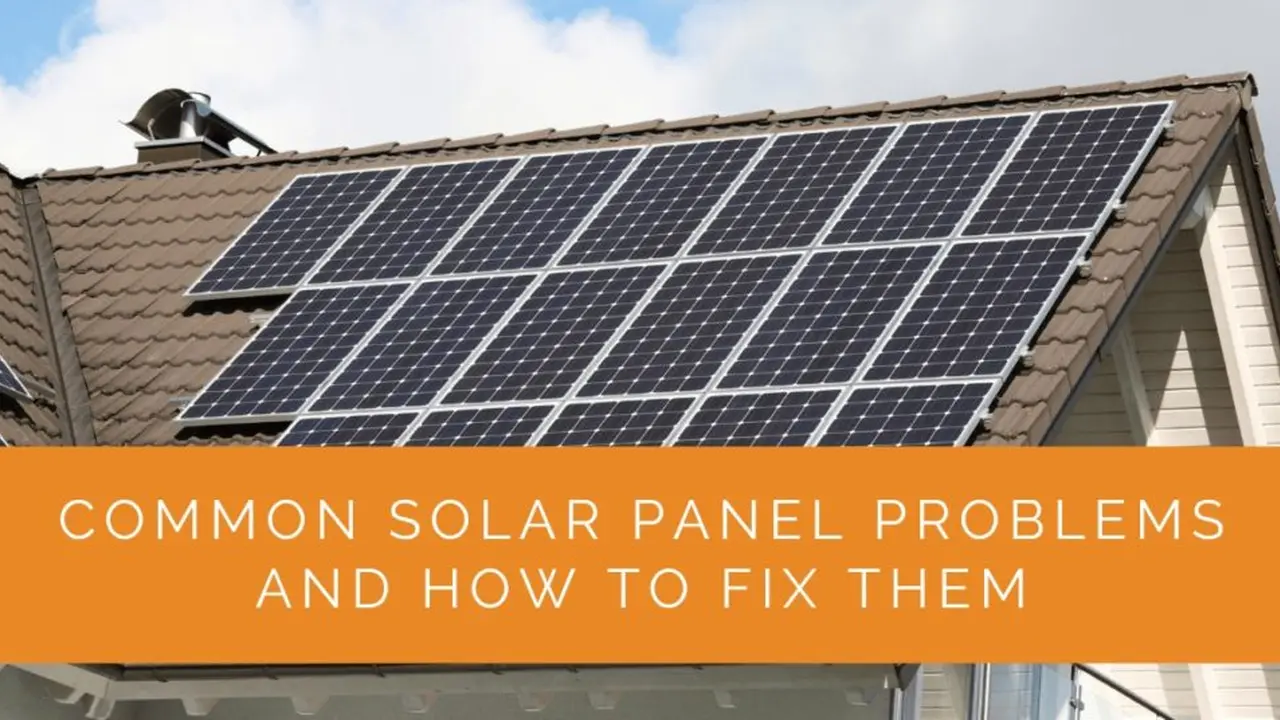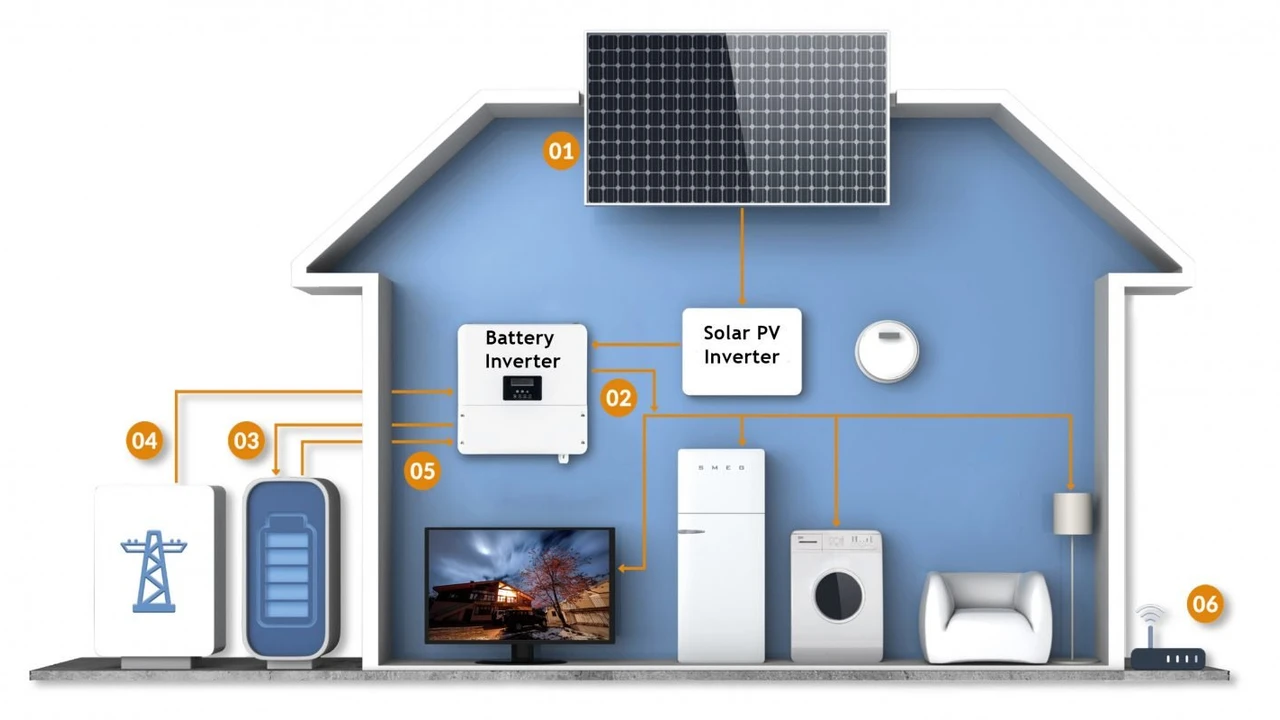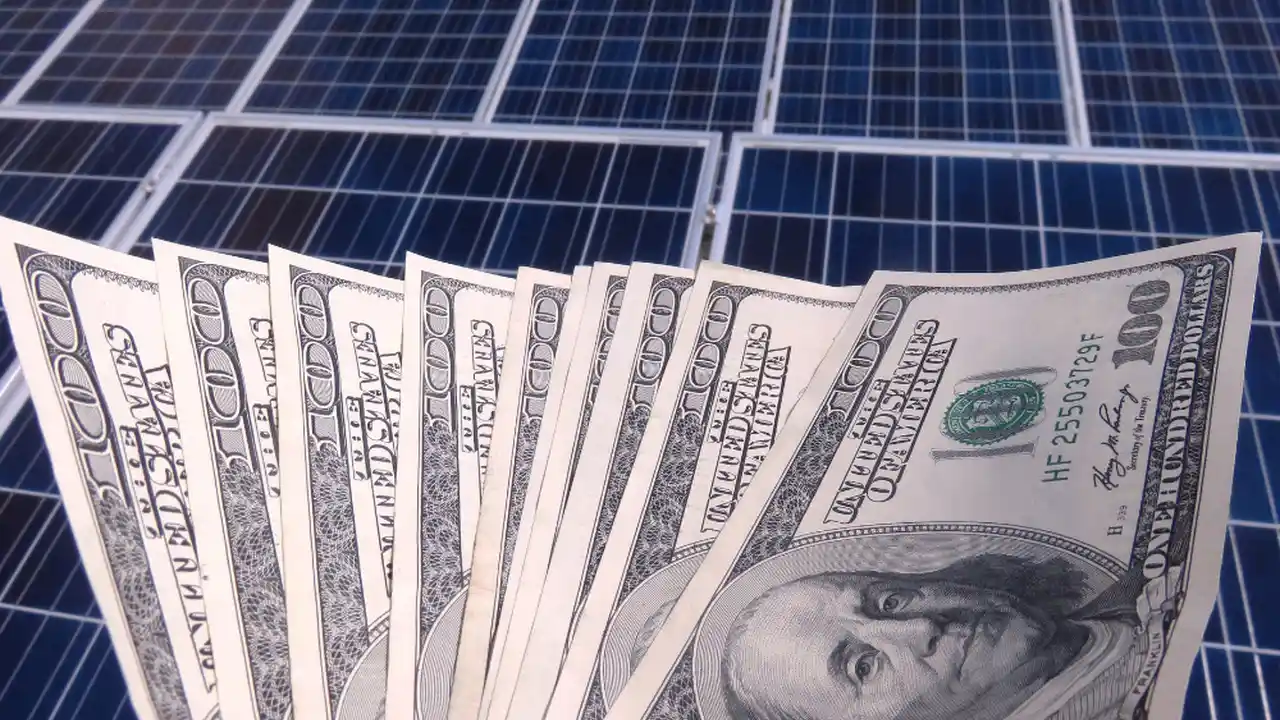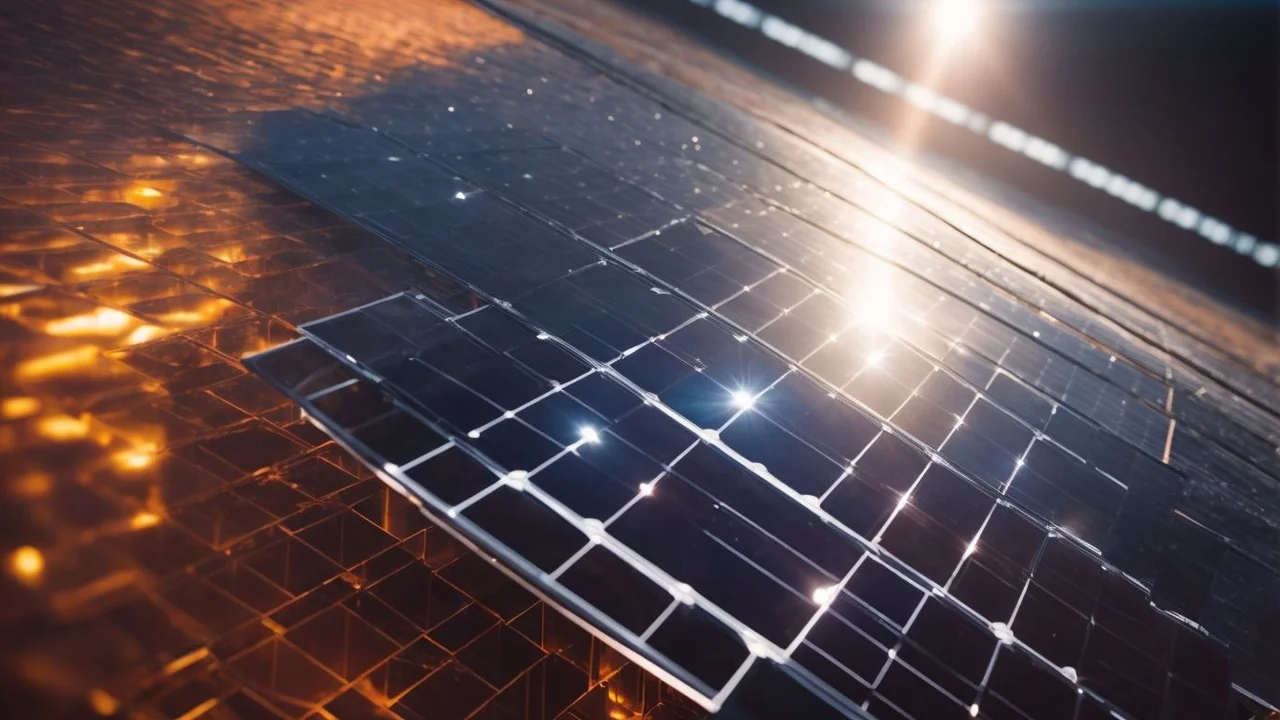5 Common Solar Panel Problems and How to Fix Them

Understanding Common Solar Panel Issues for Optimal Performance and Longevity
So, you've invested in solar panels – great move! You're helping the planet and your wallet. But like any investment, solar panels need a little TLC to keep them humming along. Let's dive into some common issues you might encounter and, more importantly, how to tackle them. We’re talking about everything from simple cleaning to more complex repairs, ensuring your system is always producing the most energy possible. Think of this as your friendly neighborhood guide to solar panel maintenance!
Problem 1: Dirt, Dust, and Debris – The Silent Energy Thief: Solar Panel Cleaning Solutions
This is probably the most common culprit for reduced solar panel efficiency. Think about it: your panels are exposed to the elements all day, every day. Dirt, dust, pollen, leaves, bird droppings – it all accumulates and blocks sunlight from reaching the solar cells. Even a thin layer of grime can significantly reduce energy production. We're talking up to a 25% reduction in some cases! Regular cleaning is key. But how do you do it safely and effectively?
The Solution:
First, safety first! Turn off your solar panel system before you begin cleaning. You don't want to accidentally short-circuit anything. Also, avoid cleaning during the hottest part of the day. The hot sun can cause cleaning solutions to dry too quickly, leaving streaks.
You'll need:
- A soft brush or sponge (avoid abrasive materials that could scratch the panels)
- A hose with a gentle spray nozzle
- Mild soap or specialized solar panel cleaning solution
Here's the process:
- Rinse the panels with water to remove loose debris.
- Mix a small amount of mild soap or solar panel cleaning solution with water.
- Gently scrub the panels with the brush or sponge.
- Rinse thoroughly with water to remove all soap residue.
- Let the panels air dry.
Pro Tip: Use deionized water if possible. Tap water can contain minerals that can leave spots on the panels. Also, consider investing in a long-handled brush specifically designed for solar panel cleaning. This will allow you to reach the panels safely from the ground.
Product Recommendations:
- Solar Panel Cleaning Kit by Unger: This kit includes a telescopic pole, a soft brush, and a squeegee. It's designed for easy and safe cleaning from the ground. Price: Around $150. Use Case: Ideal for homeowners with ground-mounted or easily accessible roof-mounted panels.
- Eco-Friendly Solar Panel Cleaning Solution by SunPower: This biodegradable solution is specifically formulated for solar panels and won't damage the panels or the environment. Price: Around $30 per gallon. Use Case: Recommended for all types of solar panels, especially those with sensitive coatings.
- Deionized Water Filter by CR Spotless: This filter removes minerals from tap water, preventing water spots on your solar panels. Price: Around $300. Use Case: Best for homeowners in areas with hard water.
Problem 2: Shading – The Sunlight Blocker: Optimizing Solar Panel Placement for Maximum Sunlight
Even partial shading can significantly impact your solar panel's performance. Trees, buildings, antennas, even a rogue flag pole – anything that casts a shadow on your panels will reduce their output. It's like trying to run a marathon with a weight strapped to your ankle. You can still do it, but it's going to be a lot harder!
The Solution:
Prevention is key here. Before installing your solar panels, carefully assess the surrounding area for potential shading issues. Observe the path of the sun throughout the day and year to identify any areas that might be shaded during peak sunlight hours.
If shading is unavoidable, consider these options:
- Relocate the panels: If possible, move the panels to a location with more direct sunlight.
- Trim or remove trees: This might be a difficult decision, but it can significantly improve your solar panel's performance.
- Install microinverters or power optimizers: These devices optimize the performance of each individual panel, minimizing the impact of shading on the overall system output. Think of it like having a team of runners, each with their own coach, rather than a single coach for the entire team. If one runner stumbles, the others can still perform well.
Product Recommendations:
- Enphase Microinverters: These microinverters are installed on each individual solar panel and convert DC power to AC power at the panel level. This allows each panel to operate independently, maximizing energy production even in shaded conditions. Price: Around $200 per microinverter. Use Case: Ideal for systems with shading issues or complex roof layouts.
- SolarEdge Power Optimizers: These optimizers are also installed on each individual solar panel and constantly track the maximum power point of each panel. They then transmit this power to a central inverter. Price: Around $80 per optimizer. Use Case: Similar to microinverters, but require a SolarEdge inverter.
- Arborist Consultation: Before removing any trees, consult with a certified arborist. They can assess the health of the trees and recommend the best course of action. Price: Varies depending on the arborist. Use Case: Essential for responsible tree management.
Problem 3: Hotspots – The Overheating Hazard: Solar Panel Cooling and Ventilation
Hotspots are localized areas of overheating on a solar panel. They occur when a cell or group of cells is shaded or damaged, causing them to generate less electricity. This can lead to excessive heat buildup, which can damage the panel and even cause a fire. Think of it like a traffic jam on a highway. The cars that are stuck in the jam get hotter and hotter, while the cars that are moving freely stay cool.
The Solution:
Regular inspections are crucial for detecting hotspots early. Look for discoloration, blistering, or other signs of damage on the panels. Thermal imaging cameras can also be used to identify hotspots that are not visible to the naked eye.
If you suspect a hotspot, contact a qualified solar panel technician immediately. They can diagnose the problem and recommend the appropriate repairs. Do *not* attempt to repair a hotspot yourself! This is a job for a professional.
Preventative measures include:
- Ensuring proper ventilation around the panels.
- Avoiding shading on the panels.
- Using high-quality solar panels with built-in hotspot protection.
Product Recommendations:
- Thermal Imaging Camera by FLIR: This camera allows you to identify hotspots on your solar panels without having to touch them. Price: Around $500-$2000 depending on the model. Use Case: Ideal for professional solar panel installers and maintenance technicians.
- Solar Panel Ventilation Kit: This kit provides additional ventilation around your solar panels, helping to prevent overheating. Price: Around $100 per kit. Use Case: Recommended for systems installed in hot climates or with limited ventilation.
- Hanwha Q CELLS Solar Panels: These panels are known for their high efficiency and built-in hotspot protection. Price: Varies depending on the size and wattage of the panel. Use Case: A good choice for new solar panel installations.
Problem 4: Inverter Issues – The System's Brain Freeze: Troubleshooting Solar Inverter Problems
The inverter is the heart of your solar panel system. It converts the DC electricity generated by the panels into AC electricity that can be used to power your home. If the inverter malfunctions, your entire system will shut down. Think of it like your computer crashing. Nothing works until you fix the problem.
The Solution:
Inverter problems can range from simple issues like tripped circuit breakers to more complex problems like component failures. Check the inverter's display for error codes and consult the manufacturer's manual for troubleshooting steps.
Common inverter problems include:
- Tripped circuit breakers
- Overheating
- Low voltage
- Communication errors
If you're not comfortable troubleshooting inverter problems yourself, contact a qualified solar panel technician. They can diagnose the problem and recommend the appropriate repairs or replacement.
Product Recommendations:
- SMA Sunny Boy Inverter: SMA is a leading manufacturer of solar inverters. Their Sunny Boy inverters are known for their reliability and performance. Price: Varies depending on the size and features of the inverter. Use Case: A good choice for residential and commercial solar panel systems.
- Fronius Primo Inverter: Fronius is another leading manufacturer of solar inverters. Their Primo inverters are known for their efficiency and ease of use. Price: Varies depending on the size and features of the inverter. Use Case: A good choice for residential solar panel systems.
- Inverter Monitoring System: These systems allow you to monitor the performance of your inverter in real-time. They can also alert you to potential problems before they cause a system shutdown. Price: Around $100-$500 depending on the features. Use Case: Recommended for all solar panel systems.
Problem 5: Damaged Wiring – The Silent Power Leak: Inspecting and Repairing Solar Panel Wiring
Damaged wiring can be a serious safety hazard and can also reduce the efficiency of your solar panel system. Wires can be damaged by weather, animals, or improper installation. Think of it like a leaky pipe. You're losing water (electricity) and it could eventually cause damage.
The Solution:
Regularly inspect the wiring for signs of damage, such as cracks, fraying, or exposed wires. Pay particular attention to the connections between the panels and the inverter.
If you find any damaged wiring, contact a qualified solar panel technician immediately. They can repair or replace the wiring safely and effectively. Again, *do not* attempt to repair damaged wiring yourself! This is a job for a professional.
Product Recommendations:
- MC4 Connectors: These connectors are used to connect solar panels to each other and to the inverter. They are designed to be weatherproof and durable. Price: Around $5 per connector. Use Case: Essential for all solar panel installations.
- Solar Panel Wiring: Use high-quality solar panel wiring that is rated for outdoor use. Price: Varies depending on the gauge and length of the wire. Use Case: Essential for all solar panel installations.
- Wire Crimping Tool: This tool is used to crimp MC4 connectors onto solar panel wiring. Price: Around $50-$100. Use Case: Essential for installing solar panels.
Comparing Solar Panel Products: Making Informed Decisions for Your Solar Needs
Choosing the right solar panel products can be overwhelming. Here's a quick comparison of the products mentioned above:
| Product | Pros | Cons | Price Range | Best Use Case |
|---|---|---|---|---|
| Unger Solar Panel Cleaning Kit | Easy to use, safe for panels, affordable | May not reach all panels on steep roofs | $150 | Homeowners with accessible panels |
| SunPower Eco-Friendly Cleaning Solution | Biodegradable, safe for panels, effective | More expensive than generic soap | $30/gallon | All types of solar panels |
| CR Spotless Deionized Water Filter | Prevents water spots, improves cleaning results | Expensive, requires regular filter replacement | $300 | Areas with hard water |
| Enphase Microinverters | Maximizes energy production, ideal for shading, panel-level monitoring | More expensive than string inverters | $200/microinverter | Systems with shading or complex roofs |
| SolarEdge Power Optimizers | Maximizes energy production, ideal for shading, requires SolarEdge inverter | Requires SolarEdge inverter, slightly less efficient than microinverters | $80/optimizer | Systems with shading, paired with SolarEdge inverter |
| FLIR Thermal Imaging Camera | Identifies hotspots, prevents damage, professional tool | Expensive, requires training to use effectively | $500-$2000 | Solar panel installers and technicians |
| SMA Sunny Boy Inverter | Reliable, high performance, widely available | Can be expensive | Varies | Residential and commercial systems |
| MC4 Connectors | Weatherproof, durable, essential for connections | Can be difficult to crimp properly | $5/connector | All solar panel installations |
Remember to always consult with a qualified solar panel professional before making any repairs or modifications to your system. They can help you diagnose problems, recommend the appropriate solutions, and ensure that your system is operating safely and efficiently.
:max_bytes(150000):strip_icc()/277019-baked-pork-chops-with-cream-of-mushroom-soup-DDMFS-beauty-4x3-BG-7505-5762b731cf30447d9cbbbbbf387beafa.jpg)






